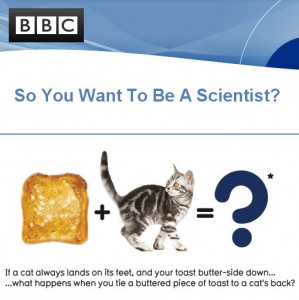
Do girls prefer pink because they can see farther into the red end of the visible light spectrum? Could playing music to bees increase their honey output? What’s the homing range of snails–in other words, how far away do you have to move them to keep them from returning to your garden?
These are just some of the burning questions that citizen scientists have decided to pursue in the quest to become BBC’s Amateur Scientist of the Year. Earlier this year, a panel of judges culled the 1,300 entrants down to a short list of 10. Today on Material World–the BBC’s weekly science broadcast–host Quentin Cooper announced the four finalists. They are:
- Croupier Sam O’Kell, who hypothesizes that the densest part of a music concert crowd is 6 to 10 feet from the barrier. He’ll test his thesis by wading into the mosh pit wearing a pressure-sensitive vest.
- High school student Nina Jones, who wants to know how and why people choose their Facebook photo.
- Photographer John Rowlands, who thinks there’s a connection between solar activity and noctilucent clouds (very high, night-shining clouds).
- Retired tutor Ruth Brooks–our favorite–who can’t stand to murder the snails in her garden and instead wants to figure out a humane, but foolproof, relocation plan.
Each of the Fab Four will work with a researcher to complete their projects. In September, they will present their results at the British Science Festival, where judges will choose the Amateur Scientist of the Year.
The best part of the whole thing is listening to the would-be scientists describe their ideas: Their sense of curiosity and wonder is contagious; from observation and anecdote to hypothesis and method, they show that science is simply a way of looking at our world. Reminds you that we’re all scientists–of one sort or another.

